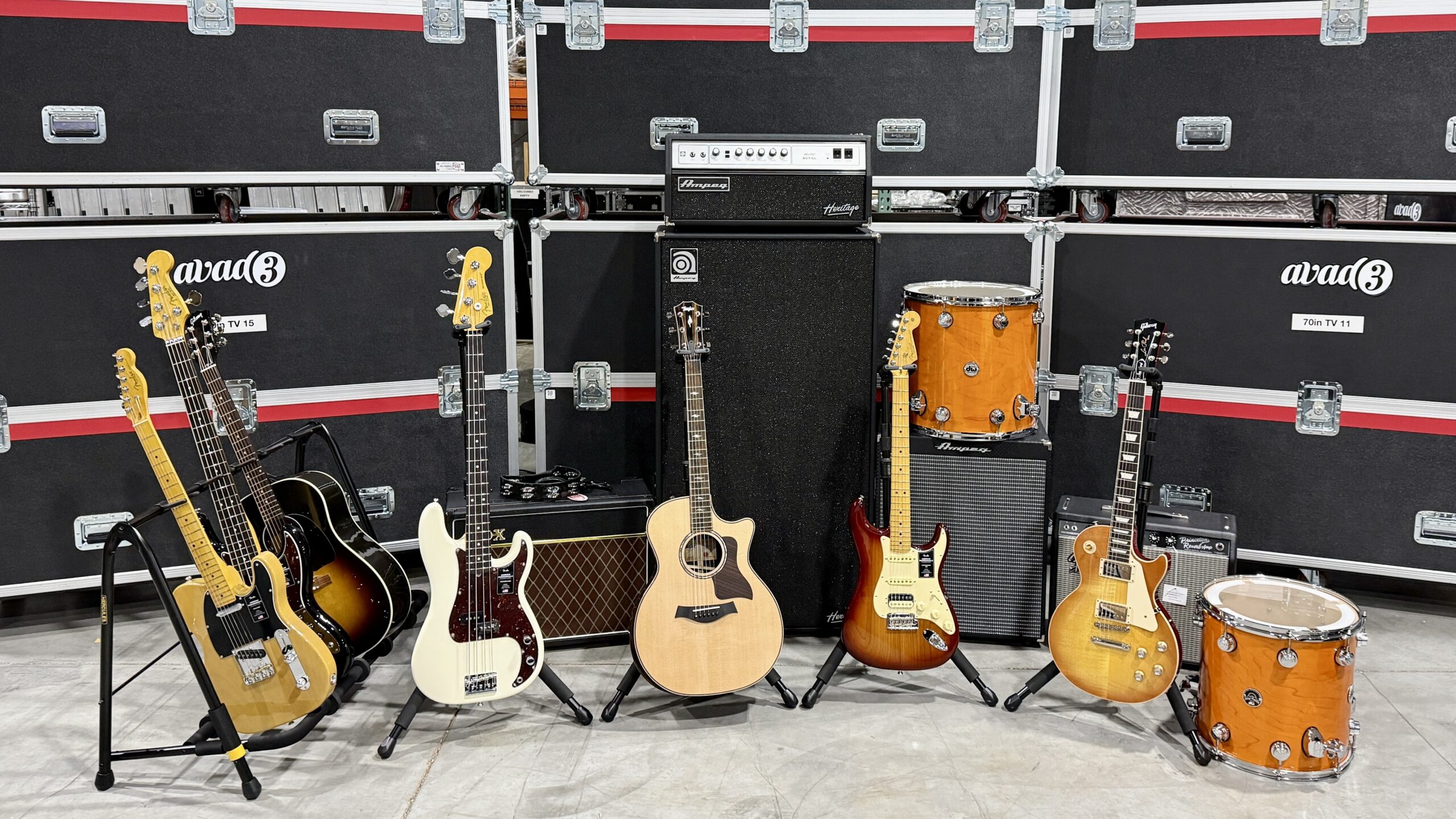If a meeting or event requires a projector and screen, figuring out where they should go and how much space they’ll need is usually the first piece in solving the room layout puzzle.
In determining what will work best for your event, there are three main projector/screen decisions to make: what size screen(s) to use, how bright your projector(s) should be, and what kind of lens should be on the projector. Although facilities’ in-house AV departments will often just assign their default options to all events, making informed decisions on these three items can solidly improve your meeting’s visual experience and is well worth the few minutes it takes to become versed on the issue.
What Screen Size Should I Use?
First, you need to know how large your screen should be. Most events use 8, 12, or 16 foot screens. Note that for screens, this measurement refers to the width of the screen, not the diagonal measurement like televisions. All screens have a 16:9 ratio, plus an additional 6-inch border around the edge. So the 16-foot screen, for example, needs a physical space of at least 17 feet wide by 10 feet high to be set up.

A simple but reliable rule of thumb for preferable screen size relates to crowd size. An 8-foot screen is a great solution for groups of 100 or fewer. From 100 to up to around 250 people, a 12-foot screen will be appropriate. Any groups larger than that will need a 16-foot screen.
This is often the end of what AV departments will discuss with meeting planners, but the other components are just as important.

How Bright of a Projector Should I Use?
How much light a projector will emit is measured in lumens, and it is the most important factor in ensuring your display is bright enough. The larger the screen a projector has to cover, the more the light will be spread out and therefore not as bright. Fortunately, we have found that three standard lumen values fit perfectly with the three main screen sizes in almost all rooms to provide the ideal amount of screen brightness: 5,000 (5k) lumens for an 8-foot screen, 8,000 (8k) for a 12-foot screen, and 12,000 (12k) for a 16-foot screen. It’s very rare that a room will have so much ambient light that upgrading is necessary, and going lower on any of these pairings would likely result in your attendees squinting to see the dim screen.

What Lens Should I Use for the Projector?
The lens is a very important and often overlooked decision because it is the sole factor that determines how far away the projector must be from the screen. The standard lens that comes with every projector will need a distance factor or ratio of 2, which means that for a 12-foot screen, it needs to be 24 feet away. When you pace that out and take a look at the resulting projection cone to ensure you keep clear of furniture or people, you can see that a large chunk of your event space will be unusable. If you’re in a large room with plenty of flexibility, that might be fine.
If, though, you’re tight for space and need to find a solution, an upgraded lens might do the trick. Your first option is called a short-throw lens. It cuts the distance factor roughly in half, usually 0.8-1.0 so that the 24-foot cone for a 12-foot screen now becomes a much more manageable 12 feet. The cost for this is usually an approximate 25% increase in the total cost of the projector, so a $1,000 projector would now be $1,250. This is a huge value because it’s one of the few ways you can add usable floor space to your layout without paying for more square footage.
Sometimes space is at a true premium and you need to allot as little as possible to your projection. In those cases, consider what’s called a snorkel lens. This lens calls for the projector to be turned backward and the periscope-looking snorkel lens will extend up and project at a very efficient distance ratio of just 0.4-0.5. This means that for a 12-foot screen, the projector can sit just 5 or 6 feet out, which is within the area that is typically unused anyway due to its proximity to the screen. Although the snorkel lens does add about 50% to the cost of the projector, it can be well worth the investment if it makes your space more workable. It’s important to know that all of the lenses we’ve mentioned can work with any projector.

Choosing the right screen, projector lamp, and lens is a simple process. Just make sure you know your options and your needs to end up with the right fit for your event every time.











